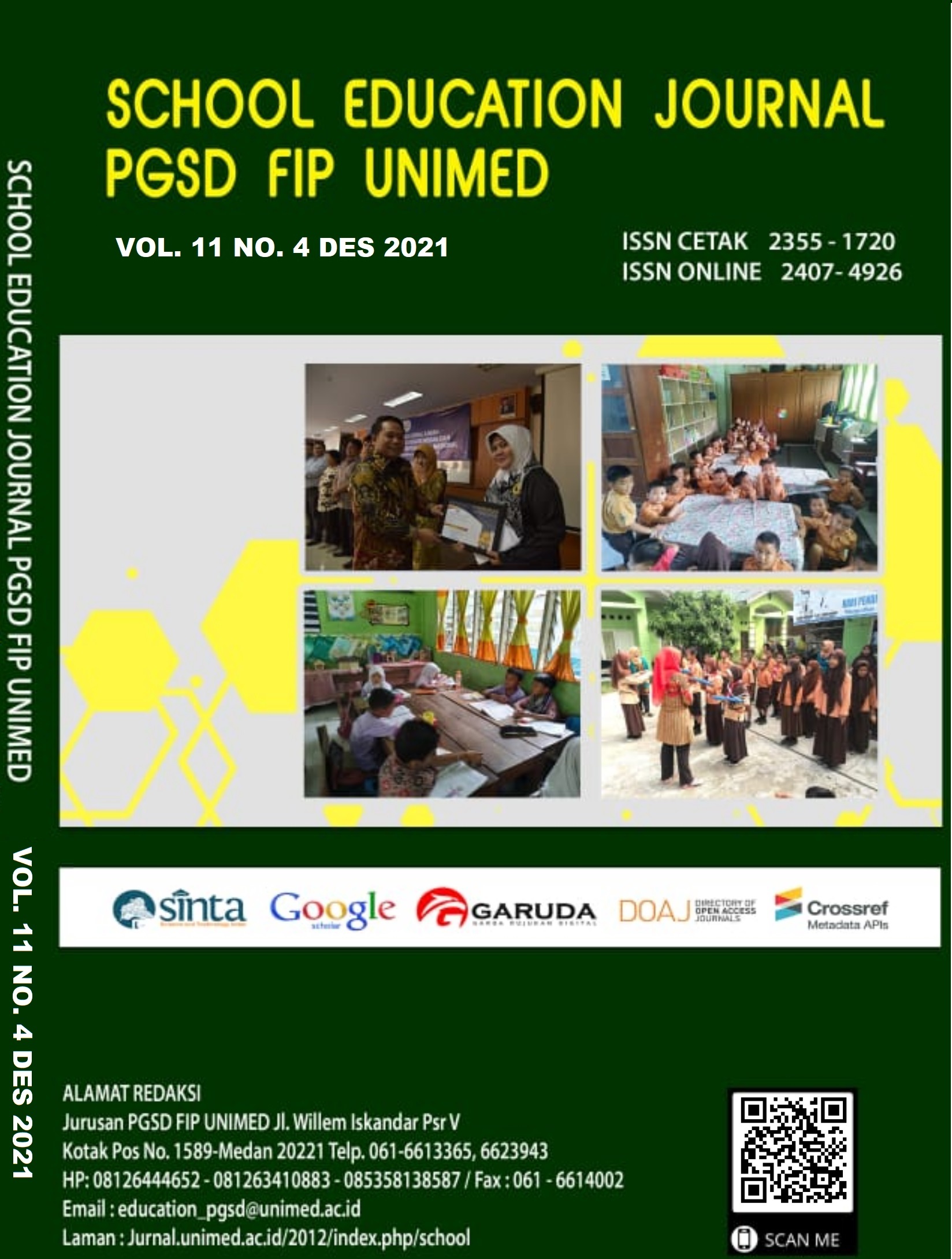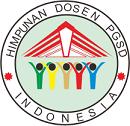ANALYSIS THE EFFECT OF POLYSEMY ON THE SPEECH LEARNING FROM COVID-19 BY NADIEM MAKARIM TO ELEMENTARY STUDENT
DOI:
https://doi.org/10.24114/sejpgsd.v12i4.40366Keywords:
Polysemy, Learning from Covid-19 Speech, Nadiem MakarimAbstract
This study entitled œAnalysis the Effect of Polysemy on the Speech Learning from Covid-19 by Nadiem Makarim to Elementary School Student. The objectives of this study were (1) to identify the types of polysemy, (2) to investigate polysemy elements used in the speech, and (3) to identify the effect of polysemy were used on the speech to elementary students. The descriptive qualitative is applied in this study. The data were obtained from the speech by Nadiem makarim using documentation method. Afterward, analysis of this study use data reduction, data display, conclusion drawing and verification. The findings of the research show that there are 65 data of polysemy™s words which find in Learning from Covid-19 speech. Based on the types of polysemy, most of Irregular Polysemy were 38 words (58.5%) and followed by Regular Polysemy with 27 words (41.5%). The effect of polysemy on the speech to the elementary student has not been widely applied to elementary school students. Inasmuch as, the student has limited complex reasoning to a word that has another meaning and is critical. In a sentence, polysemy plays an important role and has the function to distinguish the meaning of a word meaning.References
Creswell, J. W. 2014. Research Design Qualitative, Quantitative and Mixed Methods Approaches (Fourth). California: SAGE Publications Ltd.
Dunbar, G. 2001. Towards a cognitive analysis of polysemy, ambiguity, and vagueness. Cognitive Linguistics, 12(1), 1“14. https://doi.org/10.1515/cogl.12.1.1
Ichsan, I. Z., & Henita Rahmayanti. 2020. Revised Anderson™s taxonomy in environmental learning of COVID-19. European Journal of Educational Research, 9(3), page: 1257“1265. https://doi.org/10.12973/eu-jer.9.3.1257
James R. Hurford, B. H. 2007. Semantics. New York: Cambridge University Press.
Klein, D. E., & Gregory. L. Murphy. 2001. The Representation of Polysemous Words. Journal of Memory and Language, 45(2), 259“282. https://doi.org/10.1006/jmla.2001.2779
Klein, D. E., & Gregory. L. Murphy. 2002. Paper has been my ruin: Conceptual relations of polysemous senses. Journal of Memory and Language, 47(4), 548“570. https://doi.org/10.1016/S0749-596X(02)00020-7
Kussanti, D. P., & Murtiadi. 2020. Personal Branding Nadiem Anwar Makarim Melalui Pidato Hari Guru. Jurnal Trias Politika, 4(1), halaman: 51“65.
Lyons, J. 1977. Semantics. New York: Cambridge University Press.
Novikov, A. L. 2019. Polysemy. https://doi.org/10.1002/9781118339893.wbeccp423
Palmer, F. 1976. Semantics. New York: Cambridge University Press.
Pylkkänen, L., Rodolfo Llina, & Gregory L. Murphy. 2006. The representation of polysemy: MEG evidence. Journal of Cognitive Neuroscience, 18(1), 97“109. https://doi.org/10.1162/089892906775250003
Reimer, N. 2010. Introducing Semantics. New York: Cambridge University Press.
Taylor, J. R. 1995. Prototypes in linguistic theory (Second). United Kingdom: Clarendon Press.
Tuggy, D. 1993. Ambiguity, polysemy, and vagueness. Cognitive Linguistic, 3(1993), 273“290.
https://doi.org/10.1515/cogl.1993.4.3.273
Published
Issue
Section
License
Authors whose manuscripts are approved are approved as follows:
- The publication rights for all journal manuscript materials published/published on the SEJ (School Education Journal) E-Journal site are held by the editorial board with the author's knowledge (moral rights remain with the manuscript authors).
- The formal legal requirements for accessing this electronic digital journal article are subject to the terms of the Creative Commons Attribution-ShareAlike (CC BY-SA 4.0) license, which means that E-Journal SEJ (School Education Journal) has the right to store, transfer media/format, manage in the form of a database, maintain, and publish articles without asking permission from the author as long as the author's name remains as the copyright owner.
- Manuscripts published/published electronically are open access for educational, research, and library purposes.










